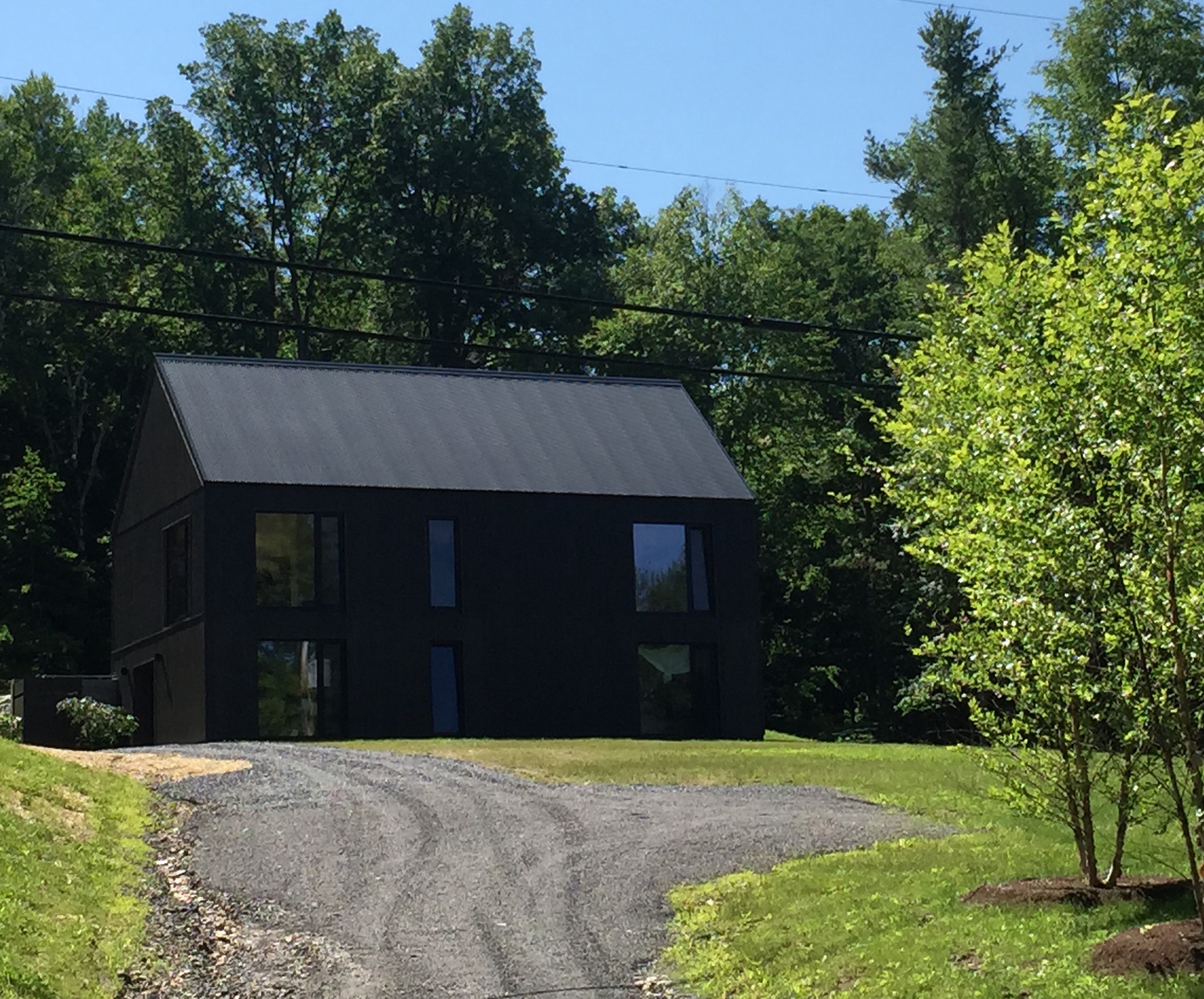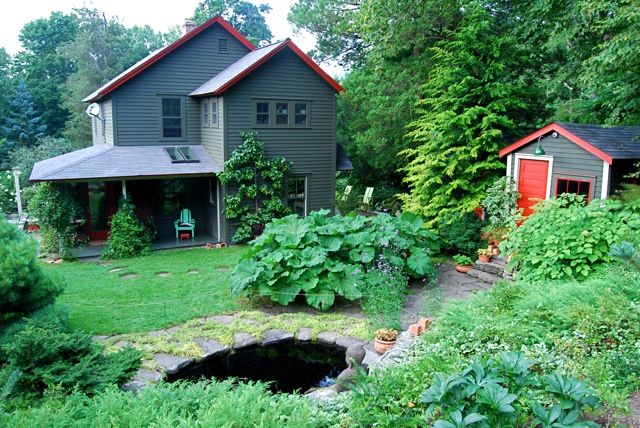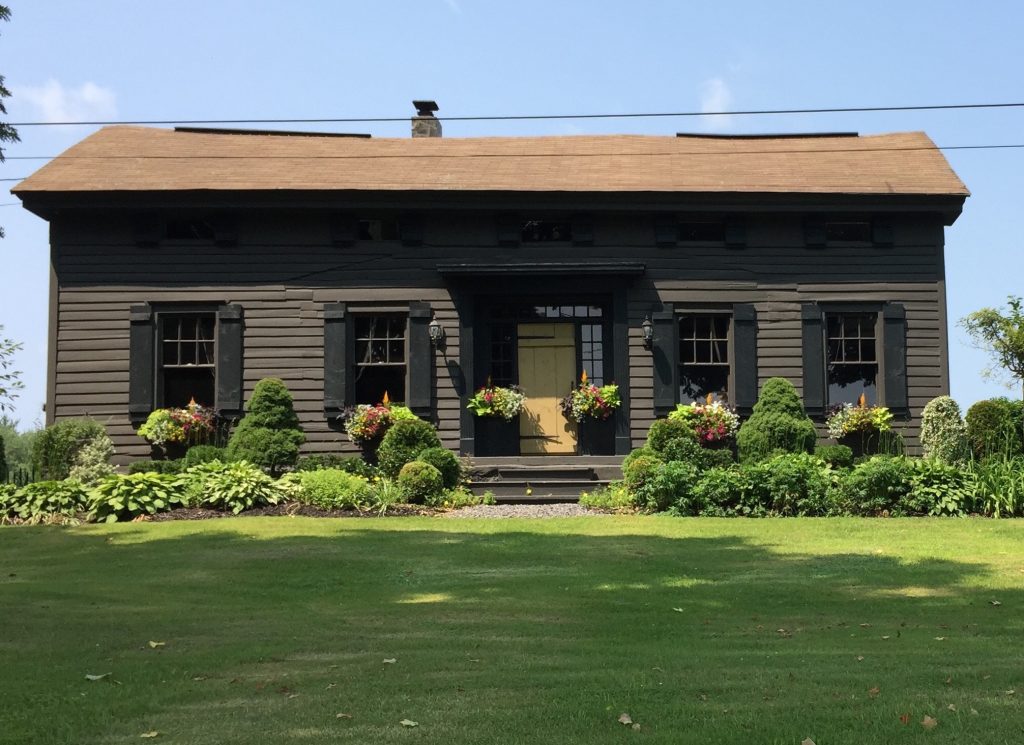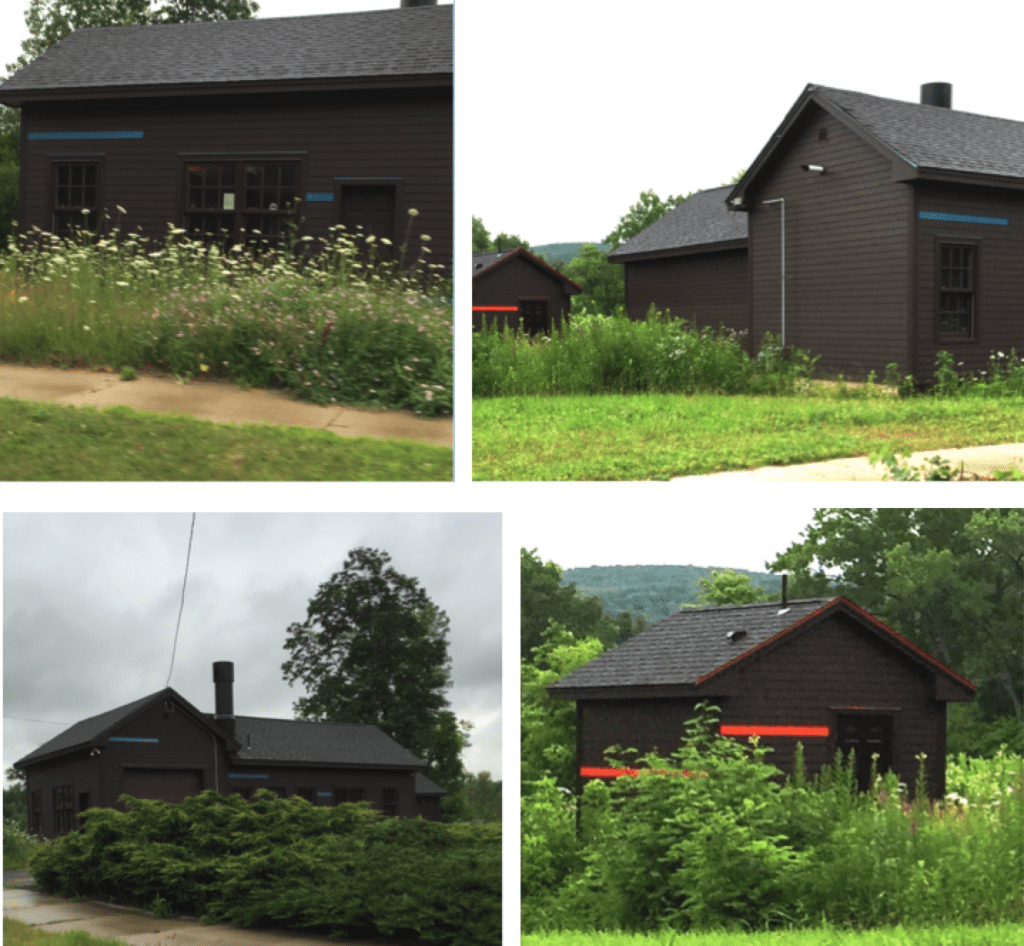
Peter Pennoyer’s Adirondack House
Dark houses are dramatic! The juxtaposition of a dark house color with the lighter sky makes for serious contrast. Of course dark houses blend in less with the environment than lighter or mid tone houses. But that’s a design choice. Dark blue, dark green, dark grey, brown and black are all great choices. A very modern approach is not to use any contrasting trim colors at all, but the success of that is very much based on the architectural style of the house. As an exterior paint color specialist I help my clients choose dark paint colors for exteriors when they want to go that direction.
One down side of going this route is that fading is much more noticeable when you start with a dark house color. Certain colors contain what’s called fugitive pigments and they are known to fade faster as they are less stable. Any reputable paint store should be able to tell you which colors in their lines are not recommended for exterior use ( although they will still sell them for that use). The worst offenders are colors which contain red pigment and some yellows as well. These pigments are used in red, orange, brown, green and even purple color paints, as certain shades of these colors can contain the offending pigment. If the area you’re painting is small, like a door, it’s easier to keep up by touching up the paint.
Just like painting an interior, a higher sheen will wear better than a flatter one but a shiny house is not very attractive. Most people go for the finish just above matte. Usually this is an eggshell, satin or pearl. Some people opt for a dead matte house anyway as a matte finish will really make your paint color pop and certain architectural styles look very good in matte. Take a look at some great dark houses. All photos by Amy Krane, unless noted.

Great Barrington slate colored house.

Black House, Columbia County

Margaret Roach’s House
Photo by Margaret

Columbia County Brown House
Look at this adventurous treatment of color on these buildings in Great Barrington. Truly, bold with it’s blue and red stripes placed carefully and artfully on the trim.


Hunter green house trimmed in a lighter yellow green, Dutchess County, NY

Navy house with turquoise door in Hudson, NY

